In recent years, life has been moving at an increasingly quick speed and we can see the changes in the world around us when we pay close attention. A more attractive environment created illness, which created increased environmental pollutants, psychosocial disorders, altered food patterns, and a poor diet. Our health is being negatively impacted by the culture that we are following and the high levels of stress. Yoga is now being embraced by many individuals as a remedy to these changes1. Yoga has been practised for ages and represents the idea of a healthy way of life. It has recently grown in popularity throughout the world and is now recognized as an alternative medicine approach. Yuj, which indicates union in Sanskrit, is where the word “yoga” comes from. It represents the fusion of personal consciousness (jee-vatma) with cosmic knowledge (Paramatma). It might ultimately lead to a state of bodily and mental health1,2.
Sudarshan Kriya has its roots set in traditional yoga and is a specific form of a yogic practice called pranayama. Pranayama is a unique part of yoga which focuses on breathing. It is mainly based on balancing the nervous system and may help with the psychological stress-related disorders, which have risen in recent times1. Sudarshan kriya is a type of cyclic controlled breathing. It has distinct components in it which are as follows:
Did You Know?
To practice Sudarshan kriya, you must follow the given steps:
In my experience, Sudarshan Kriya might offer several benefits for cardiovascular health. It may help to lower heart rate and blood pressure, promoting a healthier cardiovascular system. Additionally, practising Sudarshan Kriya has been shown to potentially improve cholesterol and triglyceride profiles, which are important markers of lipid health5.
Dr. Rajeev Singh, BAMS
Sudarshan kriya may be beneficial to both mind and body in which Sudarshan kriya may reduce stress and depression. Some of the potential uses of Sudarshan kriya are:
Sudarshan kriya might help in reducing the anxiety levels in humans and may help in the stabilisation of mental activity, brain function and relief from stress. This might help relieve the common symptoms of stress such as insomnia (inability to fall asleep). It was found in studies1 that the Sudarshan kriya yoga (SKY) practice might help in attaining an improved sleep quality by reducing stress and anxiety. Furthermore, a comparison study done on various yoga practices on post-traumatic stress disorder (PTSD) showed that the practising Sudarshan kriya has better outcomes. Sudarshan kriya yoga might provide a “corrective emotional experience” for healing deep emotional wounds and might also heal cognitive distortion (negative ways of thinking), which is usually caused due to traumatic experiences1.
A group of researchers1 led by Janakiramaiah have found that Sudarshan kriya might be helpful for people with mild and melancholic depression. Noticeable differences in the reduction of depression might be observed in the people who practised Sudarshan kriya. However, more research is required to prove these claims.
A study3 conducted on cancer patients with a habit of tobacco noticed that cancer patients who completed their standard therapy may control their tobacco habit with the help of Sudarshan kriya practices. However, more research is required regarding these effects1.
According to the literature I have come across, Sudarshan Kriya might enhance your immune function. It may increase immune cell counts in both healthy and health-compromised individuals, improving your body’s defence against infections and diseases5.
Dr. Siddharth Gupta, B.A.M.S, M.D (Ayu)
Research4 has noted that psychosocial stress (stress caused due to psychological and social situations) might also lead to an increase in oxidative stress in the body. Few studies have shown that practising Sudarshan kriya yoga might lead to a decrease in oxidative stress. In a study conducted by Sharma et al., it was seen that blood lactate (indicator of oxidative stress) levels were lowered in people practising the SKY technique. It was further noted that the levels of superoxide dismutase, catalase, and glutathione were increased. This indicates a boost in the antioxidant activity, which also contributes to the lowering of oxidative stress. Therefore, Sudarshan kriya might help in reducing oxidative stress in the body. However, more research is necessary for claims1.
Gebrag and Brown found in their study that Sudarshan kriya might be helpful in certain medical conditions:
However, more research is required to prove these claims.
Yoga practice may help develop the mind and body; however, it is still not an alternative to modern medicine. You must not rely on yoga alone to treat any condition. Please consult a qualified doctor who will be able to assess your condition correctly and advise accordingly. Moreover, it is necessary to practice and learn yoga under the supervision of a trained yoga teacher to avoid any injuries.
I would suggest practising Sudarshan Kriya for your overall respiratory health. It has been found to have a possible positive impact on respiratory function. Thus by incorporating deep, rhythmic breathing patterns, Sudarshan Kriya enhances your respiratory well-being5.
Dr. Smita Barode, B.A.M.S, M.S.
There is a requirement for more research and exploration to state the effects of the Sudarshan kriya on the body, including the risks that it might have.
With the guidance of a qualified and experienced yoga teacher/yoga expert, we can access and analyse the risk factors and continue to practice exercise with precautions.
Also Read: Benefits of Linga Mudra and How to Do it By Dr. Ankit Sankhe
Sudarshan kriya is a specific form of pranayama in which cyclic breathing is performed. It might help in calming the body and mind. It mainly includes four distinct stages in the practice: Ujjayi (victorious breath), Bhastrika (Ballow Breaths), chanting of Om and Sudarshan kriya. It might be beneficial for reducing stress, anxiety, depression, and post-traumatic stress disorder (PTSD). However, it might have risks too, which need to be explored by further researchers. Kindly ensure to seek guidance from a qualified and experienced yoga expert before practising it.
Also Read: Benefits of Trikonasana (Triangle Pose) and How to Do it By Dr. Himani Bisht
Yes, Sudarshan kriya might help in reducing the symptoms of depression when practised regularly1. If you have depression problems, consult your doctor and do not self-medicate.
Yes, Sudarshan kriya might be beneficial for insomnia, which is one of the common symptoms of stress. It has been seen in studies that it might help in the attainment of improved sleeping patterns1.
There are no reports that claim the beneficial effects of Sudarshan kriya for cancer. There is a need for more research on this subject.
Sudarshan kriya is a cyclic, rhythmic, breathing yogic practice. It consists of four distinct steps such as Ujjayi, bhastrika, chanting of om and Sudarshan kriya. It is relatively easy and can be performed under proper guidance1.
Sudarshan kriya might be beneficial for people with anxiety, stress, depression, tobacco addiction, pain, and stress-related medical conditions. However, more research is required to prove the effectiveness of these exercises in detail. Kindly ensure to practice this exercise only under the expert supervision of a yoga teacher1.
Disclaimer: The information provided here is for educational/awareness purposes only and is not intended to be a substitute for medical treatment by a healthcare professional and should not be relied upon to diagnose or treat any medical condition. The reader should consult a registered medical practitioner to determine the appropriateness of the information and before consuming any medication. PharmEasy does not provide any guarantee or warranty (express or implied) regarding the accuracy, adequacy, completeness, legality, reliability or usefulness of the information; and disclaims any liability arising thereof.
The desire to live a healthy life may sound simple, but achieving it isn’t always easy. True health is not just about being free from illness but about having the strength and balance to cope with life’s challenges.
To make this concept come to life, yoga is being adopted by many to manage our physical and mental health. It is an all-natural, drugless concept of wellness.1
Various seals and fossil remnants of the Indus Valley Civilisation indicate that yoga was prevalent in ancient India, around 2700 BC. The yogic lore considers Shiva to be the founder of yoga. It contains various asanas and practices. It includes various practices such as yama and niyama (principles for conduct in personal and social life), asana (various sitting, standing, and lying postures), pranayama (breathing techniques), pratyahara (withdrawal of senses from sense organs to control mind), bandha and mudra (manipulation of semi-voluntary and involuntary muscles), shatkarma kriya (cleansing process) and dhyana (meditation).1
Sukhasana is one of the easiest asanas among all the postures. Continue reading to discover how to incorporate it into your daily routine!
Sukhasana is also known as the easy sitting pose. It can be performed by people of all age groups. The name sukhasana is derived from the word “sukham” which means easy, comfortable, joyful or pleasure, etc.2 This is a simple pose and can be performed by beginners with ease. It is a beginner level asana. Sukhasana is the usual sitting posture in the Eastern culture. You need not necessarily be empty stomach to perform it. Even so, it might be better if you practice it in the morning as it is a meditative pose.3
There are two types of sukhasana poses:

In this posture, one has to be seated on the floor. For people having back issues, sitting with the back leaning against the wall may be more comfortable. The legs must be crossed at the mid-portion of the shins (the lower half of the legs). For additional support, blankets can be kept under the hips, and blocks can be kept under the knees.4

Similar to the previous pose, one has to be seated cross-legged on the floor. The upper part of the body (thoracic and cervical spine) has to be rotated to the right and left alternatively. You can put one hand on the knee and other hand on the floor for support and rotation.4
Let me tell you about the magic of Sukhasana. Sukhasana is derived from Sanskrit, meaning “refreshing exercise.” It is an excellent sitting position that symbolises inner fulfilment and leisure. While admiring the beauty of Sukhasana, I read in an article that with regular practice of Sukhasana, the spine may also lengthen, and the body may experience incredible stability.
Dr. Siddharth Gupta, B.A.M.S, M.D (Ayu)
Also Read: Benefits of Gomukhasana (Cow Face Pose) and How to Do it By Dr. Himani Bisht
Sukhasana is a sitting pose asana which can be easily performed by anybody. The steps to be followed are:
This asana is good for meditating, and other yoga practices like breath work (pranayama) can also be performed.3,6
In this 5G era, we constantly need gadgets like mobile phones and laptops to walk parallel to the fast-growing world. But with this, eye fatigue has become a common complaint. From my experience, when Sukhasana collaborates with other yoga asanas, it may do wonders for our eyes! I recently read an article8 which suggests sitting in the Sukhasana and doing eye exercises such as eye rotations and marching as per Trataka Karma may aid in Computer Vision Syndrome such as eye fatigue and eye muscle weakness.
Dr. Rajeev Singh, BAMS
Sukhasana is a simple asana that is popular among one and all. You may have seen pictures of your favourite celebrities practising the sukhasana as well.
Practising Sukhasana while doing your routine work may benefit your lungs! Yes, you read it right! I recently read an article9 that suggests that people who regularly practise Sukhasana may have higher lung function than others.
Dr. Smita Barode, B.A.M.S, M.S.
Also Read: Benefits of Ustrasana (Camel Pose) and How to Do it By Dr. Ankit Sankhe
In our Indian culture, sitting cross-legged is quite common. It has been a part of our culture for a long time. Many of us are habituated to sitting cross-legged on the floor while studying, praying, eating and meditating. Sitting cross-legged is basically performing the sukhasana, the advantages of which have been highlighted by yoga. The possible advantages of sukhasana are improving body stability to self-realisation. Some of the benefits of sukhasana are given below.7
Sitting in Sukhasana might help reduce chronic lower back pain. It has been seen that chronic back pain can cause depression, again leading to an increase in back pain, thus forming a vicious cycle. The authors of a study published in the American Journal of Lifestyle and Medicine think that sukhasana might help break the cycle of chronic lower back pain and depression. This might be because sitting cross-legged reduces functional disability and improves stress, depression and pain responses in patients 7
Some researchers claim that sitting in the cross-legged position, i.e. in sukhasana, may reduce functional disability and stress. It was further stated that it might also help against depression and pain response in patients. Through this research, we get a sneak peek into the extent of yoga’s potential, which extends beyond the physical realm 7
According to studies, sukhasana may have the potential to help improve cardio-metabolic (metabolic and heart diseases). It was seen that sitting in the cross-legged meditative pose may help improve the heart rate and might help against lifestyle-related heart diseases (cardiovascular diseases).7
A study was done on people with high blood pressure, where the effects of performing sukhasana and simple breathing exercises regularly were seen. From this study, it may be said that sukhasana combined with a few simple breathing exercises may help lower blood pressure.6
One study in the Orthopaedic Journal of Sciences stated that practising the sukhasana regularly might help improve the lipid profile. It claims to potentially improve the LDL and HDL (low-density lipoproteins and high-density lipoproteins) cholesterol levels. Another study potentially believed to lower the triglyceride level as well.7
Sukhasana might be beneficial in weight management as it might help improve the body mass index (ratio of body fat according to height and weight). A study published in the International Journal of Cardiology showed that sitting cross-legged might also help improve waist circumference.7
Sukhasana is a simple pose that can be performed by pregnant women. It might help calm the mind, broaden the shoulders, improve digestion, straighten the spine, improve breathing, reduce fatigue, and may uplift mood. It might have positive effects like making one feel more confident, and energised and rekindle the will to be more productive.3
Several studies claim that sukhasana helps strengthen the pelvic and core muscles. The possible benefits might extend further into helping with proper breathing, oxygenation, and blood circulation (both central and peripheral). This shows how the effects of sukhasana might be interlinked.7
Studies conducted in recent times show that sukhasana might be beneficial for the overall body, including the mind. It was seen that sitting cross-legged might improve mental integration. Getting up from the cross-legged position may also prove to improve the balance and sense of touch, which might be beneficial for our health in the long run.7
Yoga practice may help develop the mind and body; however, it is still not an alternative to modern medicine. You must not rely on yoga alone to treat any condition. Please consult a qualified doctor who will be able to assess your condition correctly and advise accordingly. Moreover, it is necessary to practice and learn yoga under the supervision of a trained yoga teacher to avoid any injuries.
Also Read: Benefits of Bhastrika Pranayama and How to Do it By Dr. Ankit Sankhe
Sukhasana should be avoided with the following conditions:
With the guidance of a qualified and experienced yoga teacher/yoga expert, we can assess and analyze the risk factors and continue to practice exercise with precautions.
Sukhasana is a simple asana that can be easily performed by people of all ages. It is as simple as sitting down on a flat surface. It is simply sitting cross-legged with a straight back and neck. This is the normal way of sitting in most Eastern cultures. This pose is believed to be beneficial for tasks requiring a lot of concentration, like studying, meditation, self-realization, etc. This deceptively simple asana might have a lot of benefits to offer. It might be helpful with chronic lower back pain, stress, heart disease, cholesterol, etc. However, if you are starting yoga asanas, you should consult a qualified doctor to begin your yoga journey with this simple pose.
Also Read: Benefits of Sudarshan Kriya and How to Do it By Dr. Ankit Sankhe
Sukhasana is a simple pose, which is also called the cross-legged easy pose. This is a meditative pose; all you have to do is sit in a cross-legged position on the floor with the back and neck straight.6
Sukhasana might be helpful for heart diseases, lower back pain, cholesterol, weight management, de-stressing, pregnancy, blood pressure, etc. This simple pose might have various benefits.3,6,7
Yes, Sukhasana can be performed by those with back pain. It may be helpful for back pain, as seen in a few studies. However, people with hip, spine and knee injuries should avoid it. Kindly consult a yoga instructor for better guidance.5,7
No. There is no compulsion to be empty stomach to perform this pose. It may be practised with proper consultation with a yoga expert. However, it might be better to perform this asana in the morning as it is a meditative pose.3
Yes, you can meditate while sitting in Sukhasana. It is believed that sukhasana can be good for tasks that require a lot of concentration and last over a long duration, for example; studying, meditation, self-realisations.7
1. National Council of Educational Research and Training. Yoga, A Healthy Way of Living, Upper Primary Stage [Internet]. Uppal S, Bijnan S, editors. Vol. 15. New Delhi: National Council of Educational Research and Training; 2016. 1–23 p. Available from: https://ncert.nic.in/pdf/publication/otherpublications/tiyhwlups1.pdf
2. Littman M. Class notes [Internet]. Vol. 94, ABA Journal. 2008. Available from: https://opjsrgh.in/Content/Worksheet/PRACTICE-WS/day160/11-PE.pdf
3. Singh C, Reddy OT, Singh V. Benefit of Yoga Poses for Women during Pregnancy. 2013;(April):18–22. Available from: https://www.researchgate.net/profile/Dr-T-Reddy/publication/340731445_Benefit_of_Yoga_Poses_for_Women_during_Pregnancy/links/5e9ad32592851c2f52aa9bcb/Benefit-of-Yoga-Poses-for-Women-during-Pregnancy.pdf
4. Greendale GA, Kazadi L, Mazdyasni S, Ramirez E, Wang MY, Yu SSY, et al. Yoga Empowers Seniors Study (YESS): Design and Asana Series. J Yoga Phys Ther [Internet]. 2012 Feb 27;2(1):1–2. Available from: https://www.ncbi.nlm.nih.gov/pmc/articles/PMC3639444/table/T2/
5. Matsyendrasana A, Muktasana P, Matsyendrasana A, Muktasana P, Chakraasana A, Matsyendrasana A. Assignment / Self-Study Notes-4: Yoga and Lifestyle [Internet]. Vol. 3. Available from: https://www.ggpsbokaro.org/images/download1/7156.pdf
6. Lindasari N, Suhariyanti E, Margowati S. Yoga Pranayama Dhiirga Swasam with Sukhasana Position on Reducing Blood Pressure in the Elderly. In: Proceedings of the 1st Borobudur International Symposium on Humanities, Economics and Social Sciences (BIS-HESS 2019) [Internet]. Paris, France: Atlantis Press; 2020. p. 333–8. Available from: https://www.atlantis-press.com/article/125939425
7. Kohli DP, Patel DP, Waybase DH, Gore DS, Nadkarni DS. The value of cross legged sitting: Virtue or vice for health.A review from sports medicine, physiology and yoga.Implications in joint arthroplasty. Int J Orthop Sci [Internet]. 2019 Jul 1;5(3):607–10. Available from: http://www.orthopaper.com/archives/?year=2019&vol=5&issue=3&ArticleId=1596
8. Trataka Karma: A Holistic Approach For Computer Vision Syndrome. Available from: https://www.ayurpub.com/wp-content/uploads/2022/04/2034-2039.pdf
9. Pulmonary Function Analysis of a Simple Crossed Legs Sitting Posture. Available from: https://link.springer.com/chapter/10.1007/978-981-15-9054-2_119
Disclaimer: The information provided here is for educational/awareness purposes only and is not intended to be a substitute for medical treatment by a healthcare professional and should not be relied upon to diagnose or treat any medical condition. The reader should consult a registered medical practitioner to determine the appropriateness of the information and before consuming any medication. PharmEasy does not provide any guarantee or warranty (express or implied) regarding the accuracy, adequacy, completeness, legality, reliability or usefulness of the information; and disclaims any liability arising thereof.
Yoga is a rich treasure with techniques beneficial for physical, mental, and spiritual well-being. In this era of expensive pharmacotherapy with innumerable side effects, it is difficult to manage diseases like hyperthyroidism or hypothyroidism, cardiovascular conditions, obesity, and diabetes.
Therefore, introducing physical exercises like yoga can gradually hasten the recovery process. Though it evolved and flourished in India, the introduction of yoga in Western culture gained much popularity and has become a statement of an optimum lifestyle in the upper-middle classes1.
Yoga involves a lifestyle that requires maintaining certain postures (Asanas) along with controlling breathing, thoughts, and enchanting mantras (recital phrases), unlike other exercises that focus on muscle stress, repetitive movements, and heavy breathing. In yoga, body is relaxed and blood requirement is reduced. This is opposite to aerobics, zumba and other exercises that increase the workload on heart to pump more blood. Yoga triggers the neuronal hormones that add significant benefits to mental and spiritual well-being1.
One of the countless postures in yoga is the ‘Shoulder stand’, also known as Sarvangasana.
Did You Know?
Sarvangasana is a posture where the whole body is balanced on the shoulder and is therefore, also known as a Shoulder stand.
Sarvangasana constitute 3 words “Sarva”, “anga” and “asana”. “Sarva” means “all”, “anga” means body part and “asana” means posture. As the name indicates, Sarvangasana is the posture involving the whole body.
It is referred to as the Queen of asanas because it maintains the physical and mental health of an individual2.
Asanas that involve postural inversion are not part of traditional practice, as the three classic hatha yoga texts do not mention these postures. They have only recently gained more popularity with increased visibility through social networks3. It is the most effective way to streamline the body and mind. It may help in attaining peace, containment and happiness4.
Sarvangasana or shoulder pose is to be practiced in the presence of trained yoga professionals. The steps to be followed while performing this asana are:
Do not strain your body by holding the final position for long during the initial practice. Increase the duration gradually from three to five minutes. Perform Sarvangasana only once during the yoga session2.
By regularly practising Sarvangasana, you can improve your posture, relieve back discomfort, and enhance overall spinal health. I recommend practising Sarvangasana (Shoulder Stand Pose) to alleviate stiffness in the back muscles caused by poor posture or prolonged standing. This pose involves stretching and lengthening the back muscles, helping to release tension and improve flexibility7.
Dr. Rajeev Singh, BAMS
Sarvangasana offers several benefits to improve physical and spiritual health. Some of the potential benefits are:
Sarvangasana may improve the blood supply to the brain. There is an increased influx of blood to the brain during the shoulder stand position. This increased influx can also help in nourishing the hair and hydrating the scalp, thus helping in preventing hair loss and improving hair growth.
An increase in blood supply to facial muscles may lead to glowing skin. The greater blood flow may also help in keeping ourselves active and energized2.
Sarvangasana may help in decreasing the production of thyroxin hormone responsible for causing hyperthyroidism. The inverted position during shoulder stand allows the heart to pump the blood to the brain and the thyroid gland and helps in curing thyroid-related disorders. The potential benefit of the blood flow during Sarvangasana is on respiration, increasing the digestive and excretory processes, and strengthening the nervous system, which is controlled by the thyroid and parathyroid glands. When the thyroid gland functions properly, all of the above-mentioned systems of the body work effectively2.
Kumar et al. 2017 mention a study5 involving 20 patients with diabetes (increased glucose level) subjected to 40 days of yoga, involving sarvangasana as one of the postures, showed a decrease in glucose levels and changes in insulin levels. The shoulder stand pose improves the functioning of pancreas, responsible for insulin production. The enhanced insulin production may help in decreasing the risk of diabetes. The involvement of asanas or postures in daily life does not have any adverse effects, and can be used as an alternate means to improve health4.
The shoulder stand may help in increasing the blood pressure of patients with low blood pressure. A study6 conducted by Naidu, S.T. et.al., 2015 on postural inversion in yoga and its effects on cardiovascular parameters, mentions that there was an increase in diastolic and systolic blood pressure during the sarvangasana. The increase in blood pressure depends on various factors especially the population (healthy or on patients with blood pressure fluctuations) performing the sarvangasana3.
Over the years, I have found that practising Sarvangasana (Shoulder Stand Pose) can help counteract the pooling of blood in the legs and abdomen. This pose involves elevating the legs above the heart, which promotes return of the blood from the organs and improves overall circulation7.
Dr. Siddharth Gupta, B.A.M.S, M.D (Ayu)
Also Read: Benefits of Halasana (Plough Pose) and How to Do It By Dr. Himani Bisht
Some of the contraindications related to Sarvangasana are:
The important point to consider while doing postural inversion is to perform it smoothly and slowly and it should be only practiced with a trained yoga teacher.
Also Read: Benefits of Prana Mudra and How to Do it By Dr. Himani Bisht
Tension and stress are part of everyday life, but they should not affect the mind and body. Performing sarvangasana helps de-stress by relieving the pain and increasing the blood supply to all parts of the body. However, it is necessary to follow precautions while performing sarvangasana to avoid the associated physical risks. Given the rising popularity of postural inversions in yoga, through social media, it is important to do additional research on the benefits and risks.
Also Read: Benefits of Bhramari Pranayama and How to Do it By Dr. Himani Bisht
Sarvangasana is also known as “shoulder stand”. It is an inversion posture where the whole body is balanced on the shoulder2.
People suffering from high blood pressure, slipped disc, vertigo, atherosclerosis, cerebral thrombosis migraine, pregnant and lactating women and people with diabetic retinopathy and who have undergone surgery should avoid shoulder stand. Sarvangasana should also be avoided in patients suffering from cold, flu and sinus problems2.
For beginners, the final position of Sarvangasana or shoulder stand should be held for a few seconds. It can be gradually increased with the practice for about three to five minutes2.
The shoulder stand or Sarvangasana may help in improving blood circulation and digestion. It may also help in rejuvenating the body and maintaining balance and posture of the body. Sarvangasana may increase blood pressure, which can be used as a potential benefit for patients with low blood pressure4.
This asana should only be performed once at the end of completion of other asanas during the yoga session. An easy relaxing posture after performing sarvangasana or shoulder stand is Shavasana (corpse pose)2.
Disclaimer: The information provided here is for educational/awareness purposes only and is not intended to be a substitute for medical treatment by a healthcare professional and should not be relied upon to diagnose or treat any medical condition. The reader should consult a registered medical practitioner to determine the appropriateness of the information and before consuming any medication. PharmEasy does not provide any guarantee or warranty (express or implied) regarding the accuracy, adequacy, completeness, legality, reliability or usefulness of the information; and disclaims any liability arising thereof.
We have always greatly enjoyed while having puffed rice as chaat on Indian streets but never realised that it could also have some health benefits. Puffed rice is one of the staple foods in India, commonly called as murmura, muri, and parmal. One can endlessly munch upon puffed rice while binge-watching an OTT show. Moreover, its crunchy texture makes it a popular option for healthy snacks and it is a quick alternative if unexpected guests show up. In India, puffed rice is often offered as a prasad in religious places.
Rice is one of the essential crops in Asian countries and puffed rice is made from rice in the presence of high pressure, heat and steam. Various methods of puffing include hot air popping, dry heat, sand and salt treated, popping in hot oil, gun puffing and microwave heating. Let us discuss, some astonishing health benefits of eating puffed rice1.
The amount of nutrients present in 14g of puffed rice is given below:
The properties of puffed rice are given below:
Some of the puffed rice health benefits are given below:

High sodium levels can elevate blood pressure but the sodium levels in puffed rice are relatively low. Therefore, it may be a good addition as a snack for individuals suffering from high blood pressure or hypertension1. Further studies are required to assess the effect of puffed rice on high blood pressure. You must check your blood pressure regularly and consult your general physician in case of high blood pressure.

Puffed rice contains insoluble fibres and may help in protecting against cancerous cells. These insoluble fibres pass quickly through the colon region which flushes cancer-causing compounds from the body. Thus, regular consumption of puffed rice may reduce the risk of colon cancer.
Further investigation to check the effect of puffed rice on the cancer is required and you should consult your doctor for the same.

Puffed rice is a rich source of carbohydrates and it generates energy slowly, leading to a steady level of energy. The carbohydrates in puffed rice may serve as fuel to the body and help in the smooth functioning of the brain1. However, further studies on animals and humans are required to check whether puffed rice is as safe and effective as it appears in these studies.

There is a possibility that puffed rice is good for weight loss. Puffed rice can form an essential part of a balanced diet. In addition, it does not contain harmful fats; therefore, it may be beneficial for weight loss1. You must consult a nutritionist for further assistance in diet changes and weight management.

Puffed rice contains the niacin, vitamin D, calcium, fibre, iron, thiamine and riboflavin. Therefore, regular consumption of puffed rice may overcome vitamin deficiency1. However, further studies on humans and animals are required to check the efficiency of puffed rice in case of vitamin deficiency. Suppose you are diagnosed with a vitamin deficiency; you must consult your doctor and take relevant supplements instead of self-medicating.
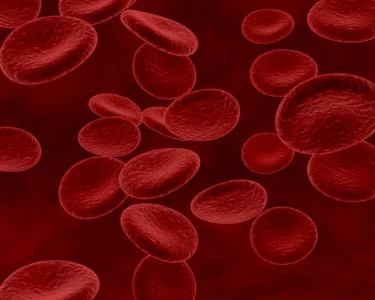
Cholesterol levels in puffed rice are low and it is practically of all harmful fats. For these reasons, puffed rice may be included in the diet of people with high cholesterol levels1. Further studies are required to check how puffed rice can be helpful in case of high cholesterol in patients. You must check your cholesterol and consult your doctor to undergo proper treatment instead of self-medicating.
Though studies show the benefits of puffed rice in various conditions, these are insufficient, and there is a need for further studies to establish the true extent of the benefits of puffed rice on human health.
Puffed rice is highly nutritious and packed with many macros and micronutrients. Puffed rice can be fortified with dietary fibre, protein, zinc, iron and vitamins A and C. Consuming fortified puffed rice in moderation can aid in your overall health2.
Dr. Siddharth Gupta, B.A.M.S, M.D (Ayu)
Puffed rice is readily available in packets in local stores and can be munched upon as it is or included in our daily diet. It is used in the preparation of Indian chaat foods like bhel puri, poha and a sweet dish like murmura laddu. Jalmuri is prepared by tossing onion, tomato, cucumber, green chillies and peanuts in the puffed rice. Masala and mustard oil are added to the same to enhance the flavour.
You must consult a qualified doctor before taking any puffed rice in large quantity. Likewise, do not discontinue or replace an ongoing modern medical treatment with an ayurvedic/herbal preparation without consulting a qualified doctor.
A bowl of ready-to-eat puffed rice (one cup) contains 77% of calories, 96% of carbohydrates, 58% of proteins and 32% of fats1.
Dr. Rajeev Singh, BAMS
Puffed rice, has no specific side effects and as yet no reactions have been noticed on using it. However, seek immediate medical attention if you experience any side effects. Consult your ayurvedic physician who has prescribed it to you; they will be able to identify the cause and treat it effectively.
Also Read: Suji (Semolina): Uses, Benefits, Side Effects By Dr. Rajeev Singh
Puffed rice is one of the staple foods and a common ingredient in the regular diet. General precautions should be taken while having puffed rice if you are taking other general medicine. Pregnant women, lactating mothers should take special care. You must consult your doctor before having puffed rice. Precautions should be taken before giving puffed rice to the elderly or childre,n and you must have puffed rice only if your doctor prescribes it.
There is not enough evidence on the interaction of puffed rice with other drugs. Further studies on the interaction of puffed rice are required. Therefore, you must consult your doctor if you are on any other medication before consuming puffed rice in larger than usual quantities.
Puffed rice may be used in case of high blood pressure, for weight management, to reduce the risk of cancer, for vitamin deficiency, in diet for individuals with high cholesterol levels and as an energy source. However, there is need for large scale human studies to confirm these benefits.
Yes, puffed rice may be used for weight loss since it does not contain harmful fats. However, its best you consult your dietitian for the same.
Puffed rice, a natural preparation, has no specific side effects. However, if any reaction is noticed on eating it, seek immediate medical attention. Consult your ayurvedic physician who has prescribed it to you; they will be able to identify the cause and treat it effectively.
Puffed rice is rich in carbohydrates and acts as an energy source. Along with that it contains insoluble fibres, proteins, calcium, vitamins, iron and potassium1.
No, there are no studies that suggest the use of puffed rice for headaches.
1. Cereals ready-to-eat, fortified, puffed, rice nutrition facts and analysis. [Internet]. [cited 2022 Aug 17]. Available from: https://www.nutritionvalue.org/Cereals_ready-to-eat%2C_fortified%2C_puffed%2C_rice_nutritional_value.html
2. Micronutrient and Protein-Fortified Whole Grain Puffed Rice Made by Supercritical Fluid Extrusion. J Agric Food Chem. 2013;61(35):8257-8263. doi: 10.1021/jf3034804. Available from: https://pubs.acs.org/doi/10.1021/jf3034804
Disclaimer: The information provided here is for educational/awareness purposes only and is not intended to be a substitute for medical treatment by a healthcare professional and should not be relied upon to diagnose or treat any medical condition. The reader should consult a registered medical practitioner to determine the appropriateness of the information and before consuming any medication. PharmEasy does not provide any guarantee or warranty (express or implied) regarding the accuracy, adequacy, completeness, legality, reliability or usefulness of the information; and disclaims any liability arising thereof.
Links and product recommendations in the information provided here are advertisements of third-party products available on the website. PharmEasy does not make any representation on the accuracy or suitability of such products/services. Advertisements do not influence the editorial decisions or content. The information in this blog is subject to change without notice. The authors and administrators reserve the right to modify, add, or remove content without notification. It is your responsibility to review this disclaimer regularly for any changes.
The gall bladder is an organ on the right side of the abdomen and is located below the liver. It stores the digestive juice (bile) secreted by your liver, which is then released into the small intestine to help break down fats. Cholelithiasis is the medical term for gallstones, which are solid deposits formed in the gall bladder. These occur in a range of sizes and can be single or multiple in number.
The symptoms of gall bladder stones may include abdominal pain, indigestion, back pain, fever, and vomiting1. In case you experience any of these symptoms for over a few hours or repeatedly, consult your doctor for diagnosis and treatment.
Remember, diet can play an important role in managing the symptoms of many conditions, including gall bladder stones. So, what should you eat and what foods should you avoid when you have gall bladder stones?
As a doctor, I advise individuals with gallstones to incorporate foods rich in vitamin B and iron into their diet. Some examples may include whole grains, dark leafy greens like spinach and kale, and sea vegetables. These nutrient-rich foods may provide essential vitamin B and iron, which are important for maintaining overall health.
Dr. Anuja Bodhare, B.A.M.S, M.D (Ayu)
A healthy diet may not help to fight all the symptoms of gall bladder stones or save you from surgery; however, it may help avoid worsening of the symptoms. This article aims to provide a guideline on what foods you should include in your diet to help reduce the stress on your gall bladder. We recommend consulting a doctor and a nutritionist for an appropriate meal plan.
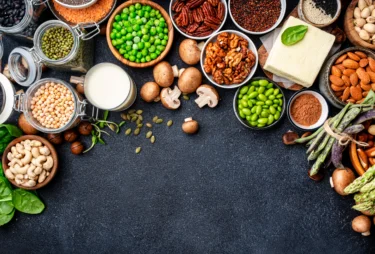
It is common knowledge that plant-based foods such as fruits and vegetables are rich in nutrients, which are essential for the body to stay healthy and functional. They also provide an ample amount of vitamins, minerals, and antioxidants. These antioxidants help remove toxins and free radicals produced by natural processes and processed food. A build-up of toxins can break down the body’s natural balance and cause cell damage. Plant-based foods offer the nutrition needed to get better and help reduce the stress on the digestive system2. Another advantage is that plant-based foods decrease the risk of cholesterol, which may help manage gallbladder stones associated with cholesterol.
As a piece of advice that I consistently offer to patients with gallstones, I recommend basing their meals on starchy carbohydrates such as bread, pasta, rice, and potatoes. By focusing on these wholesome carbohydrates, individuals with gallstones may create a nourishing and gallstone-friendly diet that promotes good health that contributes to a better you9!
Dr. Smita Barode, B.A.M.S, M.S.
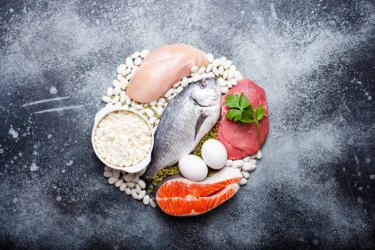
Including a source of protein that is low in saturated fat might help lower the levels of bad cholesterol in our bodies. Red meat, a good source of protein, is high in fat, which can put stress on the gall bladder. Thus, choosing lean protein sources might help you manage the symptoms of gall bladder stones. Some common options are:
You should avoid dairy products and also processed meats as they generally have higher salt content. According to a study published in the database of the National Institutes of Health, a higher intake of vegetable protein might help lower the risk of gall bladder conditions3.
Based on my personal experience, I have found a great way to add more fruits to a gallstone-friendly diet. I recommend including fruits like bananas, berries, or a handful of dried fruit in your breakfast cereal. By doing so, you may enjoy a delicious and nutritious start to your day while ensuring you incorporate the benefits of fruits into your diet.
Dr. Rajeev Singh, BAMS

Fibre is essential for good digestive health and enhances the movement of food through our gut. Thus, fibre-rich foods help lower the production of secondary bile acids, which can help decrease the stress on the gall bladder. According to a study published in the National Library of Medicine, a high-fibre diet helped decrease the production of biliary sludge (thick bile that can form gallstones)4. An increase in the amount of this sludge means an increase in the risk of gall bladder diseases. Thus, people who follow a fibre-rich diet might be at a reduced risk of gallbladder stones. It also suggests that a fibre-rich diet might offer relief to people affected with gall bladder stones. Some sources of fibre are:-

According to a hospital case study published by the National Library of Medicine, vitamin C, magnesium, and folate can help reduce the risk of gall bladder diseases and improve your gall bladder health5. Some sources high in vitamin C are:-
As part of a gallstone-friendly diet, I may suggest incorporating healthy fats such as fish oil. It may help support the regular contraction and emptying of the gallbladder8.
Dr. Siddharth Gupta, B.A.M.S, M.D (Ayu)
Now that we know about what foods we should include in our diet for a healthy gall bladder, let us look at foods we should avoid.

Unrefined carbohydrates are considered to be healthy and some sources, like whole grains and cereals, can provide essential nutrients. However, refined carbohydrates are more difficult to digest and may increase the risk of gall bladder diseases6. Some carbohydrates that you need to steer clear of are:-
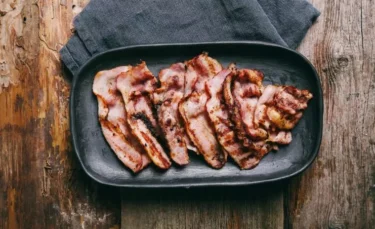
The bile produced in the gall bladder helps dissolve fats. However, it is difficult to break down saturated and trans fats, which may add to the stress on the gall bladder2. Some major sources of unhealthy fats are:-
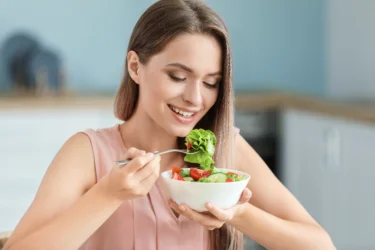
Despite taking precautions, in some cases, the gallbladder may still need to be removed. Removal of the gall bladder does not have any serious adverse effects on the body’s digestive system. However, other body systems will take time to adjust, during which the individual must make certain dietary changes to accommodate the body’s condition. Some common tips include:-
Always be sure to consult your doctor if you have nausea and pain.
Also Read: Top Non Dairy Calcium Rich Foods to Add to Your Daily Diet
The management of gall bladder stones primarily depends on adopting a balanced, plant-based diet with lean proteins, fibre-rich foods, and adequate vitamin C. Removing refined carbohydrates and unhealthy fats from your diet may help you avoid further stone formation. After gall bladder removal, eating smaller, lighter meals and allowing your digestive system time to adjust may help support faster recovery and long-term digestive health.
It is important to adopt a diet that puts less stress on the digestive system and is rich in fibre to help promote digestion. Refer to the article for detailed guidelines.
Avoid oily and deep-fried foods. Anything that triggers indigestion or bloating must be avoided.
Some common drinks that you can safely consume while you have gallstones are apple cider vinegar, apple juice, peppermint tea, turmeric tea, buttermilk and water. You should avoid drinks like caffeine that can further upset your digestive system.
The best way to get rid of pain due to gallbladder stones is by the surgical removal of the gallbladder. Other ways can be the medicines advised by your doctor.
Disclaimer: The information provided here is for educational/awareness purposes only and is not intended to be a substitute for medical treatment by a healthcare professional and should not be relied upon to diagnose or treat any medical condition. The reader should consult a registered medical practitioner to determine the appropriateness of the information and before consuming any medication. PharmEasy does not provide any guarantee or warranty (express or implied) regarding the accuracy, adequacy, completeness, legality, reliability or usefulness of the information; and disclaims any liability arising thereof.
Links and product recommendations in the information provided here are advertisements of third-party products available on the website. PharmEasy does not make any representation on the accuracy or suitability of such products/services. Advertisements do not influence the editorial decisions or content. The information in this blog is subject to change without notice. The authors and administrators reserve the right to modify, add, or remove content without notification. It is your responsibility to review this disclaimer regularly for any changes.
Suji is also known as semolina which is called rava in Indian households, is a by-product of durum wheat. Suji, also known as coarse middlings, is made from durum wheat, scientifically called Triticum durum, a cereal crop widely cultivated in the Mediterranean region. Suji is a versatile ingredient that can be used for breakfast, lunch, dinner, or snacks. It is particularly convenient on busy days as it can be cooked quickly into a variety of dishes. In Indian cuisine, suji is extensively used to prepare popular recipes such as rava dosa, upma, dhokla, and many others. Let’s explore some of the benefits of semolina (suji)1.
Suji contains various nutritional components given as follows2:
Suji may possess the following properties3:
Some of the potential uses of suji are described as follows:
Suji may have immunoregulatory properties (balancing the immune cell functions) that may help to build immunity. A constituent arabinoxylan, present in suji may also help in stimulating the immune system to fight against diseases. Further studies are required to assess the true effect of suji on the immune system in the human body3.
Suji may have anti-diabetic properties due to the presence of a plant constituent, arabinoxylans. Consumption of suji may lower the blood sugar level rise after that meal. However, you must check your blood sugar level regularly and consult your doctor in case of high blood sugar levels instead of self-medicating3.
Suji may be used in the case of cardiovascular diseases to improve heart health. Tocopherol and phenols which are the plant constituents present in suji may reduce the risk of heart diseases. However, further studies are required to study the effect of suji on the human heart. Seek medical help immediately if you experience any symptoms related to heart disease3.
Suji is an important source of dietary fibre and consumption of dietary fibre may be associated with a reduced risk of colon cancer. However, further studies on animals and humans are required to check the effect of suji on reducing the risk of colon cancer. Cancer is a serious disease; therefore, so it is essential to seek proper medical treatment rather than attempting to self-medicate3.
Suji is a good source of dietary fibre and it plays an important role in gastrointestinal function (function related to the stomach and intestine). Suji may help accelerate digestion and increase the faecal bulk, potentially supporting overall digestive health and promoting regular bowel movements. Further studies are required to check the effect of suji on the digestive health of humans. However, you must consult your doctor if you feel discomfort in your stomach3,5.
Suji may be used to control the cholesterol levels in the body, possibly due to a compound called arabinoxylans, which has antioxidant properties. However, further studies are required to check the activity of suji for controlling cholesterol. It is important to have your cholesterol levels checked regularly and to consult your doctor if you have high cholesterol3,6.
The dietary component that encourages the development of healthy intestinal bacteria is known as prebiotics. Suji may have a prebiotic effect that supports gut health. This effect is thought to be linked to a component called arabinoxylans, which may help reduce the risk of several chronic diseases. The prebiotic properties of suji might promote easier bowel movements, support healthy intestinal function, and enhance immune response. However, further research is needed to fully evaluate the prebiotic effects of suji on the human body3.
Suji may possess antioxidant properties, primarily due to the presence of ferulic acid. It may help deactivate and eliminate harmful free radicals, which are linked to the development of various chronic diseases. This activity could enhance the function of enzymes responsible for the body’s antioxidant defence. However, further studies are needed to confirm the antioxidant effects of suji in humans3.
Though studies show the benefits of suji in various conditions, these are insufficient. There is a need for further studies to establish the true extent of the benefits of suji on human health.
Based on my experience, durum wheat, including its whole grains and whole-grain flour may possess antimicrobial properties. This is attributed to the presence of Azelaic Acid (AzA), a compound known for its antibacterial and anti-inflammatory effects. AzA is commonly used in the treatment of conditions such as acne vulgaris and rosacea, and its presence in durum wheat suggests it may play a role in the grain’s antimicrobial benefits9.
Dr. Rajeev Singh, BAMS
Suji is a versatile ingredient that can be used in a variety of cuisines. It is commonly used to prepare traditional dishes such as idli, dosa, dhokla, upma, pasta, cakes and many more food items can be made from suji.
You must consult a qualified doctor before taking suji regularly. Do not discontinue or replace an ongoing treatment of modern medicine with an ayurvedic/herbal preparation without consulting a qualified doctor.
Since suji is made of durum wheat, it may trigger a wheat allergy in some individuals. Possible side effects of a wheat allergy include5:
Did you know that durum wheat, scientifically known as Triticum durum, is the second most cultivated species of wheat species after the common wheat? Interestingly, durum wheat is particularly rich in gluten and is considered the toughest among all wheat varieties8.
Dr. Siddharth Gupta, B.A.M.S, M.D (Ayu)
Consumption of suji may be a risk for those who are allergic and intolerant5.
General precautions should be taken while having suji, as in any other general medicine. Pregnant women and lactating mothers should take special care. You must consult your doctor before having suji. Precautions should be taken before giving suji to the elderly or children. In such cases, you must have suji only if your doctor prescribes it.
Also Read: Pudina (Mint): Uses, Benefits, Side Effects & More!
There is not enough evidence on the interaction of suji with other drugs. Further studies on the interaction of suji are required. Therefore, it is essential to consult your doctor if you are on any other medication before consuming suji.
Also Read: 15 Amazing Health Benefits of Ghee
Suji is a nutritious and versatile ingredient with potential health benefits like improved digestion, heart health, and immunity. However, more research is needed to confirm these effects in humans. Individuals with wheat allergies or medical conditions should consult a doctor before regular consumption.
Also Read: Poha: Uses, Benefits, Side Effects & More
Suji may be used to improve immunity, in case of diabetes, lower cholesterol, improve heart health, reduce the risk of colon cancer, improve digestive function and as a prebiotic.
Suji’s side effects may include nausea and vomiting, indigestion, diarrhoea, sneezing, and headaches. Consumption of suji may be detrimental for those who are allergic and intolerant to gluten.
Plant constituents like tocopherols and phenols may protect the heart and reduce the risk of heart diseases.
Yes, semolina may reduce the risk of colon cancer. Cancer is a serious disease; therefore, you must get proper treatment for it instead of self-medicating.
Yes, semolina may help in weight management due to the presence of fibres in it.
1. Abecassis, Joel & Autran, J.C. & Feillet, P. (2001). Durum wheat, semolina and pasta quality. Recent achievements and new trends. Available from: https://www.researchgate.net/publication/342029017_Durum_wheat_semolina_and_pasta_quality_Recent_achievements_and_new_trends
2. Food Data Central [Internet]. [cited 2022 Aug 9] Available from: https://fdc.nal.usda.gov/fdc-app.html#/food-details/168933/nutrients
3. María Ciudad-Mulero, Lillian Barros, ngela Fernandes, Isabel C.F.R. Ferreira, M Jesús Callejo, M Cruz Matallana-González, Virginia Fernández-Ruiz, Patricia Morales, José M. Carrillo. 2020;12(2): 504. Available from: 10.3390/nu12020504
4. Biswas P, Jayaseelan P, Das M, Sikder A, Chaudhury K, Banerjee R. Processing of semolina, a wonder resource for resistant starch production: In vitro digestibility and biochemical evaluation. International Journal of Biological Macromolecules [Internet]. 2022 Dec 1 [cited 2025 May 23];222:1918–24. Available from: https://www.sciencedirect.com/science/article/abs/pii/S0141813022022206
5. Kamble DB, Singh R, Rani S, Upadhyay A, Kaur BP, Kumar N, et al. Evaluation of structural, chemical and digestibility properties of multigrain pasta. Journal of Food Science and Technology [Internet]. 2020 Jul 3 [cited 2025 May 23];58(3):1014–26. Available from: https://pmc.ncbi.nlm.nih.gov/articles/PMC7884569/
6. Manzur‐Chávez A, Mareyli R, Palma‐Rodríguez HM, Efigenia Montalvo‐González, Apolonio Vargas‐Torres. Cooking effect on the physicochemical and antioxidant activity of spaghetti added with colored corn flour. JSFA Reports [Internet]. 2022 Jun 10 [cited 2025 May 23];2(7). Available from: https://www.researchgate.net/publication/360913941_Cooking_effect_on_the_physicochemical_and_antioxidant_activity_of_spaghetti_added_with_colored_corn_flour
7. B. Simonato, Pasini G, Zorzi MD, M. Vegro, A. Curioni. Potential allergens in durum wheat semolina and pasta: Fate during cooking and digestion. Italian Journal of Food Science [Internet]. 2004 Jan 1 [cited 2025 May 23];16(2):151–63. Available from: https://www.researchgate.net/publication/286816729_Potential_allergens_in_durum_wheat_semolina_and_pasta_Fate_during_cooking_and_digestion
8. Baniwal P, Mehra R, Kumar N, Sharma S, Kumar S. Cereals: Functional constituents and its health benefits. The Pharma Innovation. 2021 [cited 2025 Jun 23]. Available from: https://doi.org/10.22271/tpi.2021.v10.i2e.5681
9. Spaggiari C, Annunziato G, Spadini C, Montanaro SL, Iannarelli M, Cabassi CS, et al. Extraction and Quantification of Azelaic Acid from Different Wheat Samples (Triticum durum Desf.) and Evaluation of Their Antimicrobial and Antioxidant Activities. Molecules. 2023 [cited 2025 Jun 23]. Available from: https://www.mdpi.com/1420-3049/28/5/2134
Disclaimer: The information provided here is for educational/awareness purposes only and is not intended to be a substitute for medical treatment by a healthcare professional and should not be relied upon to diagnose or treat any medical condition. The reader should consult a registered medical practitioner to determine the appropriateness of the information and before consuming any medication. PharmEasy does not provide any guarantee or warranty (express or implied) regarding the accuracy, adequacy, completeness, legality, reliability or usefulness of the information; and disclaims any liability arising thereof.
You might have seen spring onions growing in the home kitchen gardens. It is one of the plants that is grown throughout the year (perennial plant) and cultivated all over the globe. Spring onions are used in flavoring food and used in the preparation of soups and salads1. Spring onion strongly resembles an onion, but there are a few key differences. The spring onion does not develop a full bulb like onions, it has a smaller bulb. The plant stops growing and the leaves wither away during the beginning of the winter season. It originated in Asia and is common in Northeast India1. The scientific name given to spring onions is Allium fistulosum, and it belongs to the family Alliaceae. You might be familiar with some of the species like onions, garlic, chives, leeks, etc., which belong to this genus and are important as medicinal plant. It might have potential health benefits, and we will discuss it in the following sections1.
Following the nutrients present in 100g of spring onion2
The following vitamins are present in spring onion
The following properties might be exhibited by spring onion
Recently, I came across a study that states spring onions might promote bone growth. Spring onions are said to have a rich source of minerals such as magnesium, iron, calcium, and potassium that might maintain healthy bones, and promote their growth3.
Dr. Rajeev Singh, BAMS
Spring onion might be helpful to humans in different ways, and the following are the potential uses of spring onion:
Studies showed that spring onions may contain different phenolic compounds, and these phenolic compounds may help in the antioxidant activity of spring onions. The antioxidant activity of the spring onions may neutralize the free radicals. Free radicals may increase the oxidative stress in the body which leads to the development of various diseases, mainly caused by damage to tissues and cells. The antioxidants present in spring onions might help in reducing oxidative stress. However, more research is required to claim the effectiveness of spring onions3.
Studies have shown that spring onion might have the potential to inhibit the growth of bacteria. It might be effective against bacteria like S. aureus, E. coli, and P. aeruginosa. Hendrich hypothesised that the antibacterial activity of onion might be due to the presence of flavonoids and polyphenols in it. Furthermore, Jeffery et al. and Pursseglove et al.8 showed that this potential anti-bacterial activity of spring onion might increase with its concentration. However, such claims need to be proved by further research3.
Erkin et al. found in their study that onion extract might have potential activity against the fungus Aspergillus niger. Similarly, in various studies, it was found that onion extract might have potential activity against A. niger and A. parasiticus. Kim’s research5 showed that green onion might have the ability to decrease the growth of various fungi. However, such claims need to be proved by further research3.
Spring onions may contain various bioactive components. Chisty et al. study9 found that these bioactive components like thiosulphinates and capaenes might act as an anti-inflammatory agent. However, these claims need to be further proven by more research3. Do not self-medicate in case of less immunity power.
Spring onions may contain different phenolic compounds and these phenolic compounds may help relieve pain. Tsanova’s research7 found that spring onions may help in rheumatic arthritis and osteoarthritis by decreasing pain and inflammation. However, much more extensive research is needed to scientifically back-up these claims. Kindly ensure to consult a doctor for conditions such as arthritis and do not self-medicate.
In a study6 conducted by Wagner, it was found that spring onions might help in altering histamine release and may help in reducing asthma. Another study by Tsonava et al.7 supported the findings of this study that, polyphenols present in spring onions might have a positive effect on asthma. However, these reports need to be further studied in detail. Therefore, kindly do not self-medicate and ensure that you consult a doctor.
Spring onions may suppress the tumour cells and may act as an anticancer agent. The bioactive compounds present in the spring onions may inhibit inflammatory, cellular, and molecular markers which are involved in apoptosis (Cell death). Therefore, spring onion might have an anti-cancer potential against colon tumours. However, more extensive research is required to explore the potentiality of spring onion. Cancer is a serious condition and must be diagnosed and treated properly by a doctor3.
Though there are studies that show the potential uses of spring onion in various conditions, these are insufficient, and there is a need for further studies to establish the true extent of the benefits of spring onion on human health.
From my knowledge, spring onions might be your ally in your weight loss journey. Ferulic acid and quercetin are two compounds found in the spring onion that help in reduction of the size and weight of the fat cells. Hence, they may play a significant role in overall body weight loss3.
Dr. Smita Barode, B.A.M.S, M.S.
Spring onions are used all over the world for flavoring various dishes. You can use it to flavor
You must consult a qualified doctor before taking spring onions in large quantities. Do not discontinue or replace an ongoing treatment of modern medicine with an ayurvedic/herbal preparation without consulting a qualified doctor.
Spring onion is a common culinary ingredient. It is known to be high in fibre. From my research and perspective, it may aid in digestion and may relieve constipation3.
Dr. Siddharth Gupta, B.A.M.S, M.D (Ayu)
The side effects of spring onions have not been established yet, and extensive research is required to state specific side effects of spring onions.
Also Read: Brinjal (Baingan): Uses, Benefits, Side Effects and More!
No specific precautions as such need to be taken. However, one must take general precautions and confirm with a doctor whether it is safe for them to eat spring onions. Special care must be exercised by pregnant women, breastfeeding women, children, and elderly individuals when taking spring onions in large amounts.
Also Read: Lemongrass: Uses, Benefits, Side Effects and More!
No such data is available related to spring onion consumption. It is advised that you consult a doctor and confirm if it is safe for you to consume spring onions, especially if you are undergoing any treatment and are on medication for the same.
Also Read: Corn Flour: Uses, Benefits, Side Effects By Dr. Rajeev Singh
Spring onion might be good for health as it might potentially have antioxidant, anti-platelet activity, anti-thrombotic, anti-diabetic, anti-inflammatory, anti-asthmatic, anti-cancer, and anti-microbial properties. However, more research is required to ascertain these possible effects of spring onions3,4.
There are no valid reports regarding the effects of spring onion on hair. There is a need for more research on this subject.
The potentiality of spring onion for skin has not been explored, therefore, there is lacking information on this subject.
Vitamin A, B1, B2, B3, B5, B6, C, E and K may present in spring onion2.
No. Spring onion and onion belong to the same genus Allium and have many similarities but are different species. The main difference is that the bulb of a spring onion is smaller compared to that of an onion1.
1. Aslam Z, Akhtar S, Imran M, Nadeem M, Gilani S, Elnashar M, et al. Antioxidant activity, anti-inflammatory activities, anti-cancer, and chemical composition of spring onion (Allium Fistolium) extracts. Res J Pharm Biol Chem Sci. 2017;8:1880–90. Available from: https://www.researchgate.net/publication/330410620_Antioxidant_Activity_Anti-Inflammatory_Activities_Anti-Cancer_and_Chemical_Composition_of_Spring_Onion_Allium_Fistolisum_Extracts
2. Arulselvan P, Wen CC, Lan CW, Chen YH, Wei WC, Yang NS. Dietary administration of scallion extract effectively inhibits colorectal tumor growth: cellular and molecular mechanisms in mice. PLoS One [Internet]. 2012;7(9):e44658. Available from: http://www.ncbi.nlm.nih.gov/pubmed/23024755
3. Mandey JS, Sompie M, Pontoh CJ, Rarumangkay J, Wolayan FR. Nutrients and phytochemicals of Welsh onion (Allium fistulosum L.) and their importance in nutrition of poultry in the future – a review. Scientific Papers. Series D, Animal Science. 2022;LXV(1):35-44. Available from: https://animalsciencejournal.usamv.ro/pdf/2022/issue_1/Art23.pdf
4. Goyal R, et al. Comparative analysis of nutritional, functional, and phytochemical attributes of different parts (bulb, pseudostem, leaves) of spring onion varieties. Food Chemistry. 2025;[ahead of print]. doi:10.1016/j.foodchem.2025.xxx. Available from: https://www.sciencedirect.com/science/article/abs/pii/S2212429225004158
5. Kim SH, Yoon JB, Han J, Seo YA, Kang BH, Lee J, Ochar K. Green Onion (Allium fistulosum): An Aromatic Vegetable Crop Esteemed for Food, Nutritional and Therapeutic Significance. Foods. 2023 Dec 16;12(24):4503. PMCID: PMC10742967. PMID: 38137307. Available from: https://pmc.ncbi.nlm.nih.gov/articles/PMC10742967/
6. Dorsch W, Wagner H, Bayer T, Fessler B, Hein G, Ring J, Scheftner P, Sieber W, Strasser T, Weiss E. Anti-asthmatic effects of onions. Alk(en)ylsulfinothioic acid alk(en)yl-esters inhibit histamine release, leukotriene and thromboxane biosynthesis in vitro and counteract PAF and allergen-induced bronchial obstruction in vivo. Biochemical Pharmacology. 1988 Dec 1;37(23):4479-86. doi:10.1016/0006-2952(88)90663-6. PMID: 2462422. Available from: https://pubmed.ncbi.nlm.nih.gov/2462422/
7. Emran TB, Eva TA, Zehravi M, Islam F, Khan J, Kareemulla S, Varuna NNV Arjun, Balakrishnan A, Taru PP, Nainu F, Salim E, Rab SO, Nafady MH, Wilairatana P, Park MN, Kim B. Polyphenols as Therapeutics in Respiratory Diseases: Moving from Preclinical Evidence to Potential Clinical Applications. Int J Biol Sci. 2024 Jun 3;20(8):3236-3256. PMCID: PMC11186353. doi:10.7150/ijbs.93875. Available from: https://pmc.ncbi.nlm.nih.gov/articles/PMC11186353/
8. Sharma K, Mahato N, Lee YR. Systematic study on active compounds as antibacterial and antibiofilm agent in aging onions. J Food Drug Anal. 2017 Jul 26;26(2):518-28. doi:10.1016/j.jfda.2017.06.009. PMCID: PMC9322202; PMID: 29567221. Available from: https://pmc.ncbi.nlm.nih.gov/articles/PMC9322202/
9. Marefati N, Ghorani V, Shakeri F, Boskabady MH, Kianian F, Rezaee R, Boskabady M. A review of anti-inflammatory, antioxidant, and immunomodulatory effects of Allium cepa and its main constituents. Pharmaceutical Biology. 2021 Dec;59(1):287-302. doi:10.1080/13880209.2021.1874028. PMCID: PMC7919894. PMID: 33645419. Available from: https://pmc.ncbi.nlm.nih.gov/articles/PMC7919894/
Disclaimer: The information provided here is for educational/awareness purposes only and is not intended to be a substitute for medical treatment by a healthcare professional and should not be relied upon to diagnose or treat any medical condition. The reader should consult a registered medical practitioner to determine the appropriateness of the information and before consuming any medication. PharmEasy does not provide any guarantee or warranty (express or implied) regarding the accuracy, adequacy, completeness, legality, reliability, or usefulness of the information; and disclaims any liability arising thereof.
Links and product recommendations in the information provided here are advertisements of third-party products available on the website. PharmEasy does not make any representation on the accuracy or suitability of such products/services. Advertisements do not influence the editorial decisions or content. The information in this blog is subject to change without notice. The authors and administrators reserve the right to modify, add, or remove content without notification. It is your responsibility to review this disclaimer regularly for any changes.
Chana has been an essential part of our diet, and people across the country enjoy it in their unique ways. Black chana is a staple ingredient in every Indian household used in the preparation of salads, soups and other side dishes. It is packed with proteins, fibre, and carbohydrates, which makes it an excellent addition to your everyday diet. The demand for black chana is growing high in which India being the largest producer of black chana, and more than 50 countries are producing it. Black chana can be more than a snack or food ingredient because of its potential uses1. Let us discuss the benefits of black chana.
Black chana has high nutritional value as it contains plenty of nutrients like carbohydrates, fibre, proteins, vitamins and minerals2.
The properties of black chana are as follows.
Black chana is rich in nutrients, which may show potential uses against many health conditions. Some of the uses of black chana are given below.
Chickpeas have a low glycemic load and a lower glycemic index with strong amylose, which digests slowly. These elements assist in avoiding unexpected spikes in blood sugar and glucose concentrations, which may help in type 2 diabetes by maintaining the overall sugar in the blood3. However, if you are suffering from a severe condition like diabetes, talk to your healthcare provider before using black chana or any herbal remedy for its benefits.
Black chana contains a substance called sterol, which structurally looks like cholesterol. It interferes with cholesterol absorption in the blood and may help in reducing blood cholesterol levels. The high fibre content and unsaturated fats may also help in managing the lipid content in the blood. These properties may help in maintaining healthy heart conditions3. However, more research is needed to support the use of black chana against heart disease. Therefore, you should stick to the doctor’s advice in case of any heart condition.
Black chana is a rich source of fibre, and these fibres give a sense of fullness in the stomach, and it takes more time to digest. The feeling of fullness helps in lower food intake, and this may lead to proper weight management3. However, if you want to lose or manage weight, you should talk to a dietitian or nutritionist. They can guide you about each diet’s risks and benefits.
Black chana contains a substance called raffinose, which is broken down by the gut bacteria into Butyrate. Butyrate is a short-chain fatty acid (SCF) which may help in reducing inflammation in the gut, maintain regularity in the intestine and keep the gut healthy. However, if you experience any problems with your gut, reach out to your doctor and get a diagnosis.
Though some studies show the potential uses of black chana in various diseases, there is a need for further studies to find the true extent of the benefits of black chana on human health.
There are many ways to make black chana a part of your diet.
You must consult a qualified doctor before consuming black chana or herbal remedies. You should not discontinue or replace an ongoing treatment of modern medicine with an ayurvedic/herbal preparation without consulting a qualified doctor.
You need to consume Kala chana in moderate amounts as they contain high fibre. Overeating fibre is associated with side effects like stomach pain and gas4.
Also, before using black chana or any herbal remedy, talk to your healthcare provider about the possible side effects associated with its use.
Also Read: Alum: Uses, Benefits & Side Effects
Some general precautions associated with the black chana are as follows.
Black chana is safe for pregnant women in normal food quantities. Black chana is a good source of fibre and folate5. However, it should not be consumed in excess in as it can cause side effects
Breastfeeding women should avoid eating black chana in excess. Instead, black chana should be consumed in moderate amounts.
Children should eat black chana under the guidance of their elders to avoid overeating. Also, black chana should be consumed in moderation by the elderly to avoid stomach problems.
Before using black chana as a medicine or for its benefits, talk to your doctor about the possible precautions associated with its use. It will help you avoid unwanted health effects.
Also Read: Methi (Fenugreek): Uses, Benefits, Side Effects, and More!
There is a lack of data on the interaction of black chana with medicines. If you are on medication or treatment for a particular disease condition, talk to your healthcare provider about the possible interaction of the treatment with other foods and medicines.
Black chana can be an excellent addition to an everyday diet due to its high nutritional value. Other potential uses of black chana may include lowering diabetes, avoiding the risk of heart diseases, weight management and maintaining proper gut health3. However, before using black chana against any health condition, talk to your healthcare provider and get a proper diagnosis.
Fibre-rich foods might be an effective way to manage weight, and black chana is a good source of fibre. Fibre provides a feeling of fullness in the stomach for a longer period, thereby reducing food intake3. However, people looking to lose or manage weight should talk to a healthcare provider or a dietitian. They will be able to guide you better.
No valid reports claim the potential effects of black chana on hair. There is a need for more research regarding this subject.
Disclaimer: The information provided here is for educational/awareness purposes only and is not intended to be a substitute for medical treatment by a healthcare professional and should not be relied upon to diagnose or treat any medical condition. The reader should consult a registered medical practitioner to determine the appropriateness of the information and before consuming any medication. PharmEasy does not provide any guarantee or warranty (express or implied) regarding the accuracy, adequacy, completeness, legality, reliability or usefulness of the information; and disclaims any liability arising thereof.
Peanuts are one of the most commonly used ingredients in various foods and are frequently eaten as a snack. You may have also seen peanuts being sold in tiny cone-shaped paper wrappers on the street, or at the beach. Peanuts also provide many by-products, such as peanut oil, peanut butter, roasted peanuts, salted and sweet peanut bars, peanut sauce, peanut milk, peanut flour, and peanut beverages. They are also used in soups, processed meat products, and various desserts1.
The scientific name of peanuts is Arachis hypogaea, and they are commonly known as groundnuts. Peanuts are classified as peas and belong to the legumes/beans family1. Peanuts are cultivated globally due to their nutritional value and widespread use.
China is the largest producer of peanuts, followed by India and Nigeria1. Peanuts have many nutritional benefits, as discussed below.
The nutrients in 100 g peanuts are as follows:
Peanuts may provide the following benefits:
Various studies have shown that eating raw peanuts or by-products of peanuts may have positive effects on health. This might be due to the various bioactive compounds like oleic acid, phytosterols, resveratrol, and arginine in them1. Some of the potential uses of peanuts for human health are as follows.
One of the studies showed that the regular intake of peanuts may help reduce the risk of type 2 diabetes. Peanuts may help in lowering blood glucose levels, possibly due to their vitamins, proteins, and fibre content. They also contain unsaturated fatty acids, which increase insulin sensitivity. In addition, peanuts have bioactive compounds such as flavonoids that inhibit glucose-6-phosphate translocase, thereby reducing glucose production in the liver and ultimately lowering blood glucose levels2,3. However, more research is needed to understand the role of peanuts in diabetes. Diabetes is a serious condition that requires proper diagnosis and treatment by a doctor, so it is important not to self-medicate and to seek medical advice.
It is suggested that the bioactive components of peanuts, like unsaturated fatty acids, tocopherol, selenium, copper, fibre, phytosterols, polyphenols, arginine, magnesium, and antioxidants in peanuts may help regulate inflammation1,4. However, additional research is necessary to prove these potential effects.
Research1 suggests that peanuts contain bioactive compounds, plant proteins, fibre, arginine, magnesium, monounsaturated fats, and potassium, which may help lower blood pressure and also help reduce the risk of heart disease and stroke. However, more studies are needed to confirm these effects. For high blood pressure, it is important to seek proper medical care and not self-medicate.
Peanuts and peanut butter may have the potential to help reduce the risk factors of heart diseases in individuals of all ages and genders and even in people with multiple risk factors like diabetes1. Peanuts may also help reduce total cholesterol level and improve blood circulation in the heart5. However, this needs to be verified by conducting extensive studies. Therefore, you should ensure that you consult a specialist for your heart disease and not self-medicate.
Several studies1 have shown that peanuts may have the potential to help with weight management. It was found that they might also have the potential to lower LDL (low-density lipoprotein) cholesterol, also known as bad cholesterol, and total cholesterol. One study found that consuming peanuts, peanut oil, and peanut butter helped maintain body weight. This suggests that peanuts may support weight reduction and could help in long-term weight management. However, further research is needed on the role of peanuts in weight management. It is advisable to consult a nutritionist before starting any weight management program.
Peanuts contain vitamin E and niacin, which may help protect the brain from Alzheimer’s disease and age-related cognitive decline. A study6 by Morris in 2004 involving over 4,000 people above 65 years suggested that niacin may help slow cognitive decline. This indicates that peanuts, which contain bioactive compounds, might play a role in reducing the risk of Alzheimer’s disease. However, more evidence is needed to confirm these effects.
People who consume peanuts and peanut butter regularly were found to have a lower risk of gallbladder disease. One study7 also showed that the regular intake of nuts like peanuts, almonds and walnuts reduced the risk of gallstones. Further research is required to confirm these findings. If you suspect a gallbladder problem, you should consult a doctor.
Bioactive compounds in peanuts, such as phytosterols, resveratrol, and arginine, may contribute to potential anti-cancer effects. Some research9 suggests that phytosterols could help reduce the size of prostate tumours and lower the chances of recurrence. However, these effects are not yet proven and require further research. Serious conditions like cancer must be properly diagnosed and treated by a doctor, so kindly consult a doctor.
Although there are studies that show the benefits of peanuts in various conditions, these are insufficient and there is a need for further research to establish the true extent of the benefits of peanuts on human health.
I suggest consuming peanuts regularly on a daily basis as they may extend your life. According to a large-scale study10, those who consumed nuts daily, including peanuts, were less likely to pass away for any reason than those who did not. The reason for this outcome is the presence of components such as antioxidants that may increase longevity and have been recognised for their potential to keep you away from illness.
Dr. Siddharth Gupta, B.A.M.S, M.D (Ayu)
Peanuts can be consumed raw or used for making various snacks and products. More than three hundred products were developed by the “father of the peanut industry” George Washington Carver1,8. Peanuts can be consumed in several forms, including:
They are also used for cooking, for example in soups and desserts.
You must consult a qualified doctor before taking peanuts in large amounts. Do not discontinue or replace an ongoing treatment of modern medicine with an ayurvedic/herbal preparation without consulting a qualified doctor.
Numerous substances in peanuts and their skins have been shown in studies1 to offer potential health advantages beyond those of a basic diet. From my perspective, peanuts may be considered a functional food because they include a variety of useful ingredients, such as Coenzyme Q10, which may guard the heart against oxygen deprivation caused by conditions like high elevations and blocked arteries. In addition to being a good source of dietary fibre, peanuts also contain a variety of essential nutrients, such as vitamin E, iron, zinc, potassium, and magnesium, as well as minerals like selenium, manganese, and copper, as well as other antioxidant compounds like flavonoids and resveratrol.
Dr. Rajeev Singh, BAMS
The common side effects of peanuts include:
Allergies: Peanuts may cause allergies in some people. While the exact cause is not fully understood, the cotyledons (the inner part of the seed) are thought to contain components that can trigger allergic reactions1. Possible symptoms of peanut allergy include:
Food poisoning: Peanuts contaminated with the fungus Aspergillus flavus may cause food poisoning if consumed1.
Also Read: Bakuchi: Uses, Benefits, Dosage & Side Effects
It is important to be cautious when consuming peanuts, as some individuals may experience the above-mentioned side effects. Make sure you are not allergic to peanuts before including them in your diet.
More research is needed to understand how peanuts interact with medicines. Therefore, if you are taking any medications or undergoing treatment, consult your doctor to confirm whether it is safe for you to consume peanuts.
Also Read: Dried Dates: Uses, Benefits, Side Effects & More!
Peanuts are well-known for their potential health benefits. In countries like India, where malnutrition is common, they are widely consumed as snacks and in products such as peanut oil, peanut butter, and peanut-based sauces. While peanuts may support health, they can also cause side effects such as diarrhoea, itching, swelling, vomiting, asthma, anaphylactic shock, and food poisoning. Therefore, it is advisable to consult a healthcare professional before including peanuts in your diet.
Peanuts may have potential health benefits related to conditions such as diabetes, heart disease, Alzheimer’s disease, gallbladder disorders, certain cancer, high blood pressure and weight management1. However, further studies are needed to prove these potential effects.
Several studies1 have shown that peanuts may potentially reduce the risk of heart disease.
There are no reliable reports supporting benefits of peanuts for the skin, and further research is needed in this area.
Peanuts can be included in a balanced diet when eaten in moderation. However, portion control is important as they are calorie-dense.
Disclaimer: The information provided here is for educational/awareness purposes only and is not intended to be a substitute for medical treatment by a healthcare professional and should not be relied upon to diagnose or treat any medical condition. The reader should consult a registered medical practitioner to determine the appropriateness of the information and before consuming any medication. PharmEasy does not provide any guarantee or warranty (express or implied) regarding the accuracy, adequacy, completeness, legality, reliability or usefulness of the information; and disclaims any liability arising thereof.
Hypertension or high blood pressure in so common that today nearly every family has an adult with the condition. It might be dangerous if left unchecked. Hypertension is a chronic medical condition in which the blood pressure in the arteries is elevated. It makes the heart work harder to pump out the blood against this higher pressure, affecting the arteries (blood vessels) in the long run. Normal blood pressure is a force when a heart pumps blood against the artery walls. In adults, normal blood pressure measurement is 120/80 mmHg. The blood pressure during hypertension is 130/80 mmHg or higher. The higher the pressure, the greater the risk of complications1,2.
Hypertension increases the risk of heart diseases and stroke. Other conditions such as kidney diseases, congestive heart failure and blindness may also occur in case of very high blood pressure for too long.
It is estimated that twenty-nine per cent of adults in the US are affected by hypertension. The occurrence of this condition increases along with age and approximately 63 per cent of people over the 60s are more affected. Hypertension is more common in African Americans. It might start at a younger age and is more severe than in other populations1,2.
About 75-80 per cent of the world population, especially in developing countries, has started using herbal medications to manage hypertension. Herbal medicines have greater acceptability with the human body and have fewer side effects1.
So readers, presented below are a few home remedies for hypertension that you can try for managing hypertension in the comfort of your home, after a quick check with your doctor. Do not try to replace your current medicines with these herbal remedies.
The underlying cause of hypertension is unknown in ninety-five per cent of the cases. It might be related to both genetic as well as environmental factors1,2.
The following factors might increase the risk of developing hypertension.
These days incidence of hypertension in the young population has increased significantly. In many cases, patients are unaware that they are having high blood pressure(because there are no symptoms). After the age of 30, one should get their blood pressure checked periodically so that their hypertension is diagnosed at the earliest, which will help them to prevent any further complications.
Dr. Nikhil Yadav, MBBS MD, CCEBDM
One of the significant concerns about hypertension is that you may not even know that you have it. This can be because there is no direct cause identified yet. The following signs and symptoms must be noted in cases of extremely high blood pressure and may be completely missing in people with high blood pressure1,2.
Some home remedies for managing hypertension that you can try along with your prescribed medicines are:
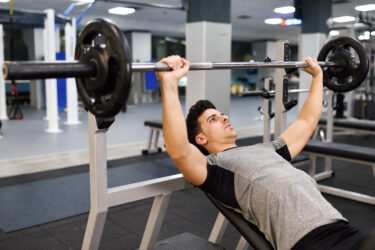
In hypertension, changing or altering your regular lifestyle can go a really long way in managing the increased blood pressure. Regular exercise might increase heart performance. A proper diet regime containing more fruits and vegetables is a good choice. Avoiding having foods that are high in cholesterol, salts and fats can help maintain your blood pressure within healthier range and reduce the need for medicines3.
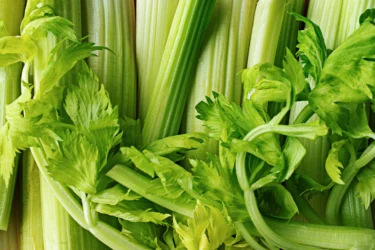
Celery is a medicinal herb that is used as a food and traditional medicine. Celery contains essential oils and flavonoids. It is rich in potassium, dietary fibre, vitamin K, folate, manganese, etc. Potassium is necessary for the heart and might help manage high blood pressure4.
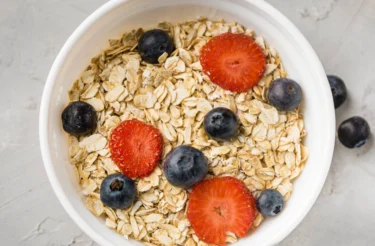
Oatmeal is a rich source of dietary fibre, and one of the many possibly beneficial home remedies to lower blood pressure. A diet containing soluble whole oats might significantly lower hypertension. A scientific study11 (Keenan et al. 2002) found that adding oats cereal to a patient’s regular hypertension diet substantially reduces systolic and diastolic blood pressure. Whole oats may be an effective dietary therapy in the treatment of hypertension1.
Oatmeal porridge may be one of the beneficial natural remedies for high blood pressure. To make oatmeal porridge, add some hot water and sugar to the oats cereal mixture. You can adjust the porridge consistency as you want by stirring the mixture. Oatmeal porridge is instant food and yet, it is so healthy that it may be used for managing hypertension.
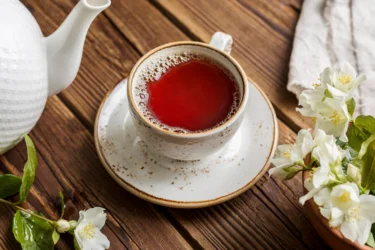
Several health benefits associated with tea might potentially be useful for managing hypertension. Research10 by Yang et al. 2004 suggests that drinking green tea (unfermented) and oolong tea (partially fermented) might decrease the risk of developing hypertension1.
Oolong tea is partially fermented and sits between black and green tea. It is a more caffeinated-type tea.
Drinking green tea may provide instant relief from high bp. To make green tea, add some green tea leaves or a green tea bag in hot water. Let it simmer for a few minutes. Then, remove the leaves and use the brew to sip on. You can also add honey or some lemon juice to it if you don’t like the taste of green tea. Nothing beats this home remedy if you stay in a cold region.
It is a very common observation that a person might be taking medicines to control hypertension which are not effective or the patient has stopped taking medicines for hypertension which leads to uncontrolled hypertension, which might lead to a life-threatening situation. These should be attended by a physician on an urgent basis.
Dr Ashish Bajaj, M.B.B.S, M.D. in Clinical Pharmacology and Toxicology

Garlic might be considered one of the best home remedies for hypertension given how widely it is available in nearly every household in abundance! Studies have reported that it may have hypotensive action (blood pressure-lowering effect). Garlic is thought to increase nitric oxide production, which might result in smooth muscle relaxation and dilation of vessels. The active compound that gives garlic its unique odour and healing benefits is known as allicin1.

One study8 (Mojiminiyi et al. 2007) reported the calyx of hibiscus has a blood pressure-lowering effect. An animal study9 (Adegunloye et al. 1996) also suggested that an intravenous administration of the water extract of dry hibiscus calyx produced a drop in the blood pressure in animal studies. A human clinical trial of the plant extract has shown similar evidence1.

Hawthorn or hawberry has been used in China for thousands of years. It maybe used as a decoction for managing hypertension. Various studies, including clinical trials and pharmacological studies, have shown that it has the ability to lower blood pressure. Hawthorn contains two main substances – procyanidins and flavonoids that might contribute to its beneficial effects on the heart. These essential components have potent antioxidant activity1.
Also Read: Home Remedies For Headache By Dr. Siddharth Gupta

Ginger roots are commonly used in Asian cooking. They might help to enhance blood circulation and relaxe the muscles surrounding blood vessels. There are various formulations used in animal studies, such as ginger rhizome and Korean ginseng extract. A report7 by (Nicoll et al. 2009) suggested that the human trials for the hypotensive (low blood pressure) effect of ginger have been few and generally resulted in inconclusive results1.
Though there are studies that show the benefits of the given herb and home remedies in the condition, these are insufficient. Therefore, there is a need for large-scale human studies to establish the true extent of the benefits of these home remedies on human health. Thus, these should only be taken with caution and never as a substitute for medical treatment.
Celery contains high levels of 3-N-butylphthalide, a kind of photochemical that may help in controlling high blood pressure. You can eat a few stalks of celery as a simple snack daily.
Dr. M.G. Kartheeka, MBBS, MD(Pediatrics)
Hypertension is often asymptomatic. However, you must take immediate medical attention if you see the following danger signs-
You must not rely on home remedies alone for the treatment of hypertension or high blood pressure. You should consult a qualified doctor for any advice for hypertension. Hypertension is a severe health condition and needs diagnosis and treatment appropriately.
Also Read: Natural Home Remedies For Diabetes By Dr. Rajeev Singh
Over the past 50 years, the definition of hypertension has continuously evolved. Hypertension or high blood pressure likely develops with advancing age. It is a complex disease and is influenced by genetic as well as environmental factors3.
Though there are no symptoms of hypertension and some people don’t even know that they have it, a regular checkup and doctor’s consultation will help you establish it and treat it in time.
A lifestyle and dietary changes along with proper medications might help you lower the risk of associated health complications1. You can follow simple home remedies that may be helpful in managing hypertension. But ultimately, the doctor’s advice is essential.
Also Read: Natural Home Remedies To Reduce Belly Fat
Hypertension is classified as primary (essential) or secondary hypertension. About 90 to 95% of cases are called primary hypertension. It refers to high blood pressure for which no medical cause has been identified. The remaining 5 to 10% of cases are termed secondary hypertension and are caused by some underlying medical condition and can often be corrected1.
Hypertension is estimated to affect about 63 per cent of adults above the age of sixty. Other than this, there is a possibility that it might start in the younger generation in case of African Americans2.
Herbal medicines are used in most developing countries due to their better tolerability and fewer side effects. Other herbs such as flaxseeds, basil, soybeans, tomato, sesame, cocoa bean, cocoa butter, carrot, radish, black plum, pomegranate, murungai, etc. may be used as potential home remedies for managing hypertension1. However, people should not use these herbs to self-medicate themselves on their own before consulting with an Ayurvedic physician.
Other than herbal medicines, conventional medicines such as beta-blockers, diuretics, calcium channel blockers, and angiotensin-converting enzyme (ACE) inhibitors have been used. They all have been shown to reduce the occurrence of stroke in patients with hypertension3. However, people must consult their doctor before using any medicines to manage hypertension.
1. Tabassum N, Ahmad F. Role of natural herbs in the treatment of hypertension. Pharmaco Rev. 2011;5(9):30-40. Available from: https://www.ncbi.nlm.nih.gov/pmc/articles/PMC3210006/pdf/PRev-5-30.pdf
2. Hypertension: MedlinePlus Genetics [Internet]. [cited 2022 Jul 7]. Available from: https://medlineplus.gov/genetics/condition/hypertension/#references
3. Price R, Kasner S. Hypertension and hypertensive encephalopathy. Handb Clin Neurol. 2014;119:161–167. Available from: https://pubmed.ncbi.nlm.nih.gov/24365295/
4. Illes J. Blood Pressure Change After Celery Juice Ingestion in a Hypertensive Elderly Male. Journal of Chiropractic Medicine. 2021;20(2):90–94. Available from: https://www.ncbi.nlm.nih.gov/pmc/articles/PMC8703128/pdf/main.pdf
5. Ried K. Garlic lowers blood pressure in hypertensive subjects, improves arterial stiffness and gut microbiota: A review and meta-analysis. Experime and Therape Med. 2020;19(2):1472-1478. Available from: https://www.ncbi.nlm.nih.gov/pmc/articles/PMC6966103/pdf/etm-19-02-1472.pdf
6. Singh P, Khan M, Hailemariam H. Nutritional and health importance of Hibiscus sabdariffa: a review and indication for research needs. J of Nutri Health & Food Engin. 2017;6(5):125–128. Available from: http://medcraveonline.com/JNHFE/JNHFE-06-00212.pdf
7. Nicoll R, Henein MY. Ginger (Zingiber officinale Roscoe): a hot remedy for cardiovascular disease? Int J Cardiol. 2009 Jan;131(3):408-9. doi:10.1016/j.ijcard.2007.07.107. PMID: 18037515. Available from: https://pubmed.ncbi.nlm.nih.gov/18037515/
8. Mojiminiyi FB, Onifade AA, Adeyemi OO. Antihypertensive effect of an aqueous extract of the calyx of Hibiscus sabdariffa in experimental hypertension. J Ethnopharmacol. 2007;113(1):47–52. doi:10.1016/j.jep.2007.06.009. Available from: https://www.sciencedirect.com/science/article/abs/pii/S0367326X0700072X
9. Adegunloye BJ, Omoniyi JO, Owolabi OA, Ajagbonna OP, Sofola OA, Coker HA. Mechanisms of the blood pressure lowering effect of the calyx extract of Hibiscus sabdariffa in rats. Afr J Med Med Sci. 1996 Sep;25(3):235-238. PMID: 10457797. Available from: https://pubmed.ncbi.nlm.nih.gov/10457797/
10. Yang YC, Lu FH, Wu JS, Wu CH, Chang CJ. The protective effect of habitual tea consumption on hypertension. Arch Intern Med. 2004 Jul 26;164(14):1534–40. doi:10.1001/archinte.164.14.1534. PMID: 15277285. Available from: https://pubmed.ncbi.nlm.nih.gov/15277285/
11. Keenan JM, Whelton SP, Whelton PK. Oat ingestion reduces systolic and diastolic blood pressure in patients with mild or borderline hypertension: a pilot trial. J Fam Pract. 2002;51(5):451–456. PMID: 11978262. Available from: https://pubmed.ncbi.nlm.nih.gov/11978262/
Disclaimer: The information provided here is for educational/awareness purposes only and is not intended to be a substitute for medical treatment by a healthcare professional and should not be relied upon to diagnose or treat any medical condition. The reader should consult a registered medical practitioner to determine the appropriateness of the information and before consuming any medication. PharmEasy does not provide any guarantee or warranty (express or implied) regarding the accuracy, adequacy, completeness, legality, reliability or usefulness of the information; and disclaims any liability arising thereof.
Links and product recommendations in the information provided here are advertisements of third-party products available on the website. PharmEasy does not make any representation on the accuracy or suitability of such products/services. Advertisements do not influence the editorial decisions or content. The information in this blog is subject to change without notice. The authors and administrators reserve the right to modify, add, or remove content without notification. It is your responsibility to review this disclaimer regularly for any changes.
Next Page »« Previous Page